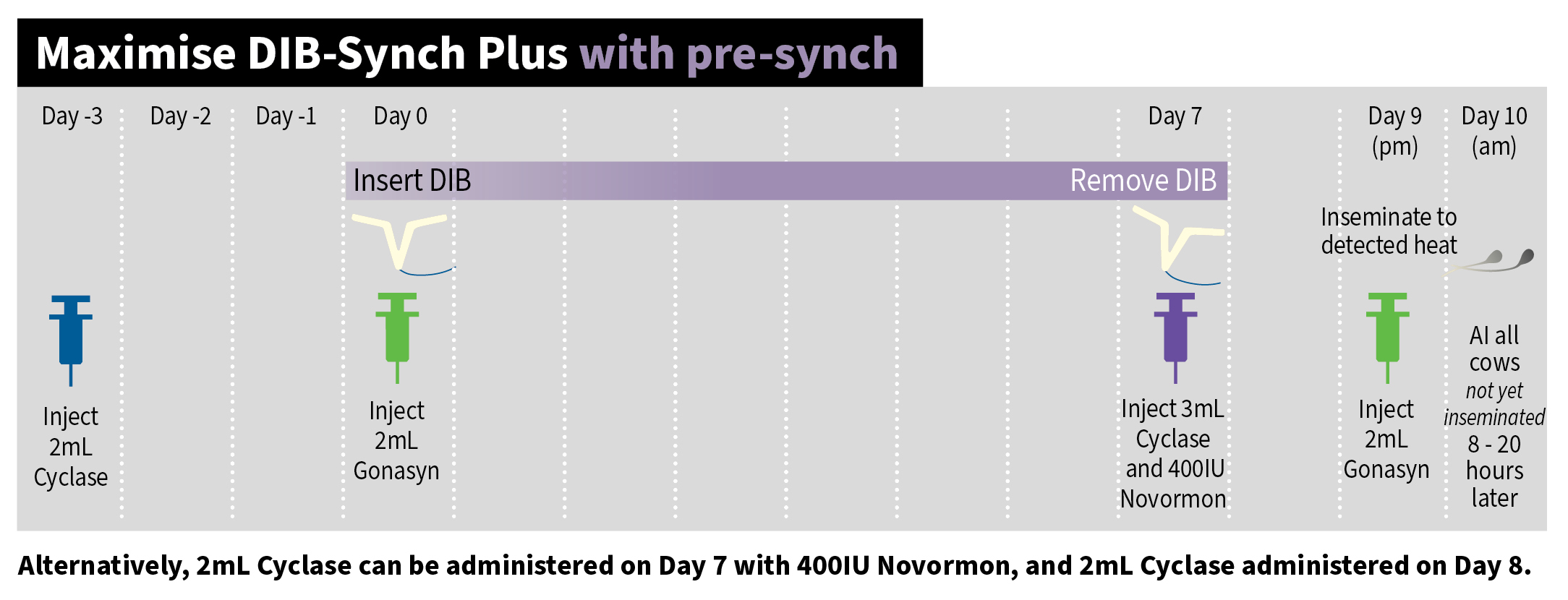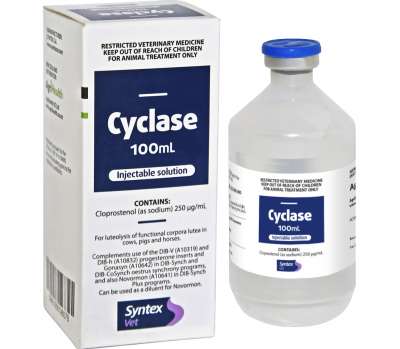Non-cycling Cows
A period of non-cycling called "anoestrus", following calving is normal and cows will start coming on heat as the uterus recovers from pregnancy and reduces in size. Typically cows will first ovulate six weeks after calving.
Non-cycling cows at the start of mating, also known as No Visible Oestrus (NVO) or anoestrous cows, are a common challenge on most dairy farms in New Zealand. These 'non-cyclers' reduce the reproductive performance of the herd and consequently reduce the financial performance of the farm, as if left untreated these cows take longer to become pregnant and hence produce less milk.
There are two types of non-cyclers:
1. Cows that have ovulated (i.e. ovaries are 'cycling') but cows have not displayed a detected heat (silent oestrus or 'missed heat').
2. Cows that are yet to ovulate
Conditions that prevent cows coming into oestrus post-calving include:
- Inadequate nutrition pre- and post- calving
- Any chronic debilitating disease, such as uterine infection (metritis), lameness, or other cause of significant weight loss
First calving heifers usually take longer to start cycling activity after calving due to the nutritional stresses / energy requirements resulting from continued growth and lactation, and often make up a higher proportion of non-cycling cows.
Treating anoestrous cows prior to the start of mating with a DIB-Synch Plus program provides the best economic return primarily due to treated cows having an average of 21 more days in milk the next season.
Non-Cycling cow treatment


See the link to our Farmer Flyer for Non Cycling Cows here
See the video series for Ready to Mate below:
Ready to Mate. Episode 1: Introduction to Ready to Mate
Ready to Mate. Episode 2: Body Condition
Ready to Mate. Episode 3: Growing Heifers
Mating. Episode 1: Heat Detection
Mating. Episode 2: Bulls on NZ Dairy Farms
Treating Non Cycling Cows. Episode 1: Treating Non Cycling Cows
Treating Non Cycling Cows. Episode 2: DIB for Non Cycling cows.
Listen to our podcast, Tips and Tricks for vets on non-cycler cow treatment here.
Check out a summary of our Repro Programs here.
Non-cycling Cows
A period of non-cycling called "anoestrus", following calving is normal and cows will start coming on heat as the uterus recovers from pregnancy and reduces in size. Typically cows will first ovulate six weeks after calving.
Non-cycling cows at the start of mating, also known as No Visible Oestrus (NVO) or anoestrous cows, are a common challenge on most dairy farms in New Zealand. These 'non-cyclers' reduce the reproductive performance of the herd and consequently reduce the financial performance of the farm, as if left untreated these cows take longer to become pregnant and hence produce less milk.
There are two types of non-cyclers:
1. Cows that have ovulated (i.e. ovaries are 'cycling') but cows have not displayed a detected heat (silent oestrus or 'missed heat').
2. Cows that are yet to ovulate
Conditions that prevent cows coming into oestrus post-calving include:
- Inadequate nutrition pre- and post- calving
- Any chronic debilitating disease, such as uterine infection (metritis), lameness, or other cause of significant weight loss
First calving heifers usually take longer to start cycling activity after calving due to the nutritional stresses / energy requirements resulting from continued growth and lactation, and often make up a higher proportion of non-cycling cows.
Treating anoestrous cows prior to the start of mating with a DIB-Synch Plus program provides the best economic return primarily due to treated cows having an average of 21 more days in milk the next season.
Non-Cycling cow treatment


See the link to our Farmer Flyer for Non Cycling Cows here
See the video series for Ready to Mate below:
Ready to Mate. Episode 1: Introduction to Ready to Mate
Ready to Mate. Episode 2: Body Condition
Ready to Mate. Episode 3: Growing Heifers
Mating. Episode 1: Heat Detection
Mating. Episode 2: Bulls on NZ Dairy Farms
Treating Non Cycling Cows. Episode 1: Treating Non Cycling Cows
Treating Non Cycling Cows. Episode 2: DIB for Non Cycling cows.
Listen to our podcast, Tips and Tricks for vets on non-cycler cow treatment here.
Check out a summary of our Repro Programs here.

